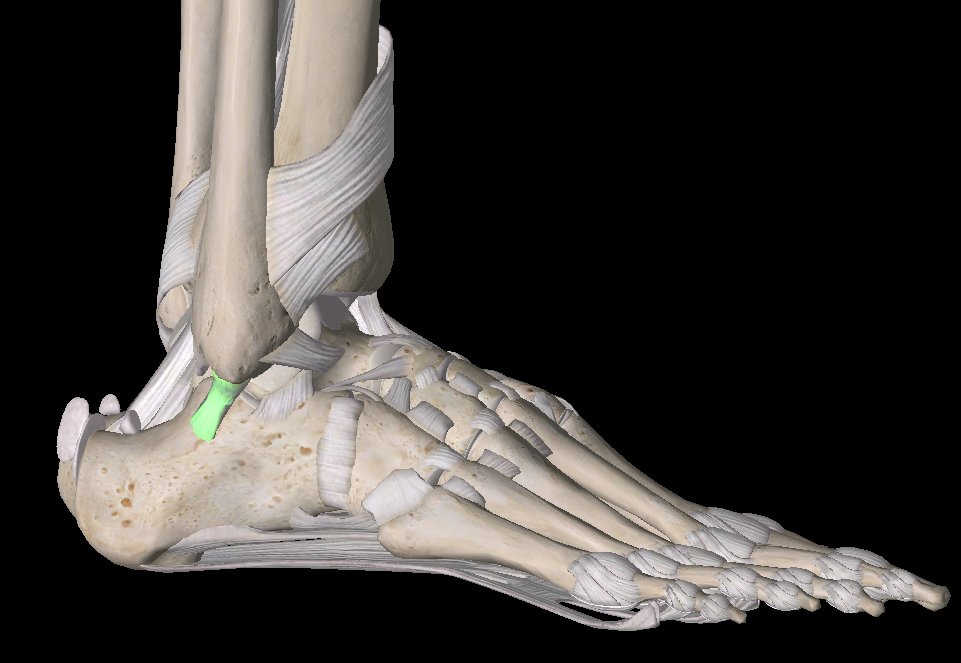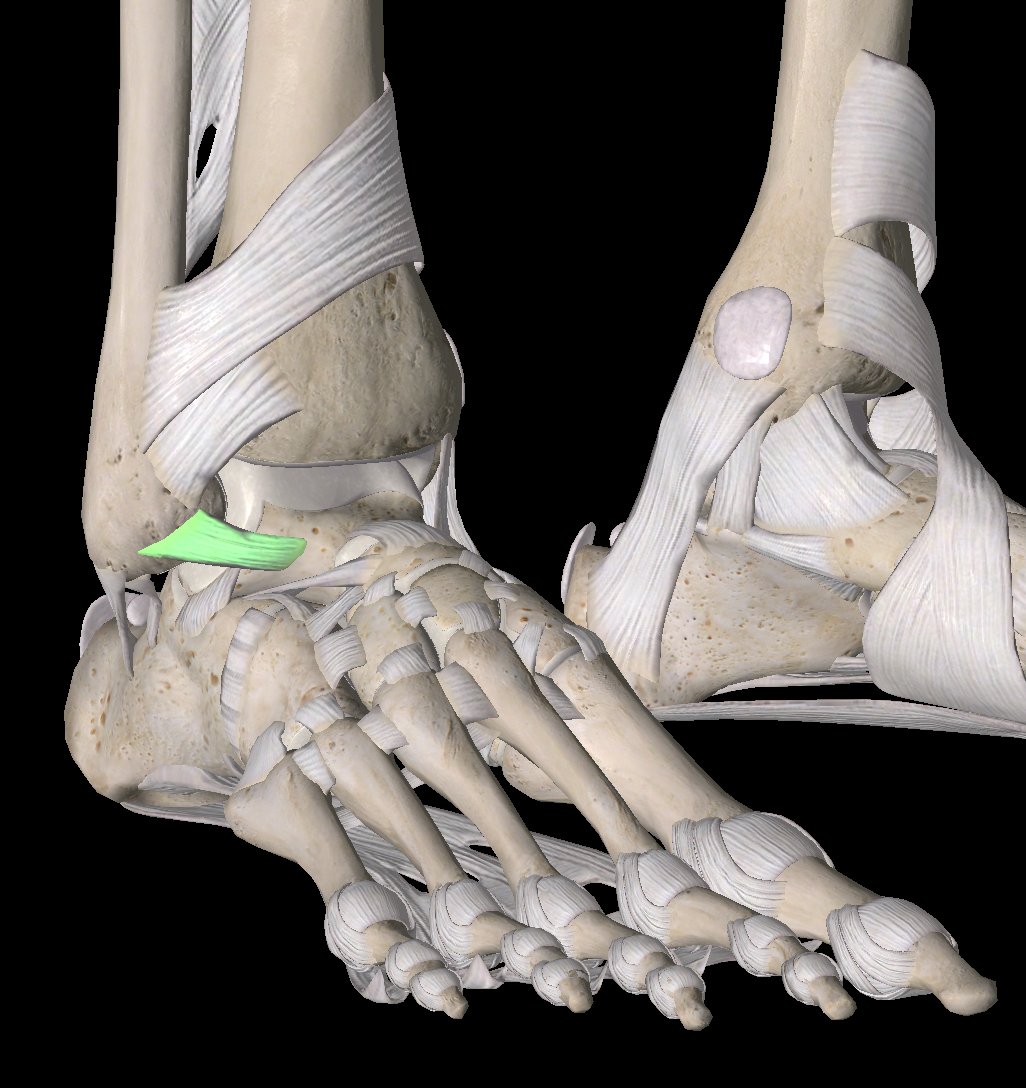Physical Therapy for Ankle Sprains & Chronic Ankle Instability
What is a Lateral Ankle Sprain? (LAS)
Lateral ankle sprain is one of the most common musculoskeletal injuries in both athletes and the general population. Incidence is high in court and team sports, such as soccer, volleyball, basketball, and handball.
LAS is one of the most common musculoskeletal injuries in both athletes and the general population. Incidence is high in court and team sports, such as soccer, volleyball, basketball, and handball.
Mechanism of Injury for a lateral ankle sprain:
Forced plantarflexion/inversion movement
Referred to as inversion ankle sprains or as supination ankle sprains
LAS usually occur during a rapid shift of body center of mass over the landing or weight-bearing foot
The ankle rolls outward, whilst the foot turns inward causing the lateral ligament to stretch and tear
ATFL, CFL, PTFL - ligaments usually damaged in that order
Calcaneofibular Ligament
Posterior Talofibular Ligament
Anterior Talofibular Ligament
LAS has high rates of recurrence and can lead to persistent impairments (range of motion, muscle strength, and functional performance), deterioration of functional ankle capacity, and long-term sequelae. Movement patterns such as gait, running, and the ability to land from a jump are commonly impaired following a LAS. Subsequent sprains may occur and the person may report a feeling of instability in the ankle.
Up to 40% develop chronic ankle instability after a LAS injury.
What is Chronic Ankle Instability (CAI)?
Chronic ankle instability is a condition characterized by frequent episodes of giving way, persistent symptoms such as pain, weakness or reduced ankle range of motion, decreased self-supporting function and recurring ankle sprains that continue for beyond one year after the initial sprain.
Who are copers?
Copers are individuals who sprained their ankle, but did not develop CAI. Therefore, the goal of rehabilitation after a LAS is for individuals to become copers instead of developing CAI.
Lateral Ankle Sprain Clinical Presentation
Pain especially when putting weight on the affected foot
Tenderness upon palpation of the ankle joint
Bruising, edema and swelling
Limitation in range of motion and instability at the level of the joint
Complains of cold foot or paresthesia which could imply neurovascular compromise of peroneal nerve
Inversion injury or forceful eversion injury to the ankle
Previous history of ankle injuries or instability
Special Tests: positive signs in Anterior Draw Test, Talar Tilt Test
Acute Lateral Ankle Sprain Risk Factors
Female sex
Hip abductor and extensor weakness
Poor performance on balance and hopping tests
Participating in court sports
Chronic Ankle Instability Risk Factors
Not using prophylactic bracing
Not participating in an exercise-balance program
Poor functional performance after a LAS
Participating in sports
Higher BMI
How to Prevent a First Time Lateral Ankle Sprain?
Primary prevention of first-time lateral ankle sprain (for individuals who have not experienced a first-time LAS)
Prophylactic bracing, particularly for those with risk factors for LAS
Prophylactic balance training exercises
How to Prevent another Lateral Ankle Sprain?
Secondary prevention of recurrent lateral ankle sprains following an initial sprain
Prophylactic bracing
Proprioceptive and balance-focused therapeutic exercise training programs to
Address impairments identified on physical examination
What to do if you have Chronic Ankle Instability?
If your ankle continues to give way and cause pain, even 1 year after the original ankle sprain, then you should do the following:
Use an ankle brace when participating in sports that may cause an ankle sprain
Perform balance exercises daily (varying degrees of difficulty, depending on what you can tolerate). Below are a few options:
Work on improving your calf flexibility. Below is an option:
Work on improving your ankle dorsiflexion mobility. Below are some options we like:
Strengthen the calves, ankle evertors, ankle dorsiflexors, hip extensors, hip abductors.
Calf Exercises for Ankle Sprains
Ankle Evertors for Ankle Sprains
Hip Extensors for Ankle Sprains
Ankle Dorsiflexors for Ankle Sprains
Hip Abductors for Ankle Sprains
Seek physical therapy consultation to improve your muscle flexibility and joint mobility
Gradually progress to hopping variations that prepare you to return to your sport. We start with double-legged variations, and progress to single-legged variations. Below are some examples:
Plyometric Exercises for Stronger Ankles
Performance Tests for Chronic Ankle Instability
Here are some tests we utilize with our athletes to confirm that they’re ready to return to their sport.
Single leg stance test on firm surfaces
20 seconds with eyes closed. We like to see no errors (meaning no need to place the other foot on the ground for support/balance)
Modified Star Excursion Balance Test
We set up a Y and allow for 3 trials in each direction, on each ankle. We want to see both legs within 10% of one another for distance reached in each direction.
Side Hop Test
Two strips of tape are set up 12 inches apart from one another. We ask the athlete to hop back and forth on one leg over the markers. We are testing each side to see how many times the athlete can hop back and forth in a 20-second time frame. If the athlete touches the tape, that hop is not counted. Ideally, we want to see no more than a 10% difference between sides.
Figure-of-8 Hop Test
We’d like to see this drill be performed within 12 seconds. We do compare between sides, with no more than a 10% difference between sides being desirable.
If you are an athlete dealing with an ankle sprain or ankle instability, please contact us below to speak with a physical therapist.
Disclaimer: This is not intended to be formal medical advice. Your individual needs should be met by the appropriate health care practitioners. Please consult with a trusted provider.
Dr. Vincent Liu PT, DPT
Dr. Paul Nasri PT, DPT, OCS, COMT
Doctor of Physical Therapy
The Game Plan Physical Therapy



